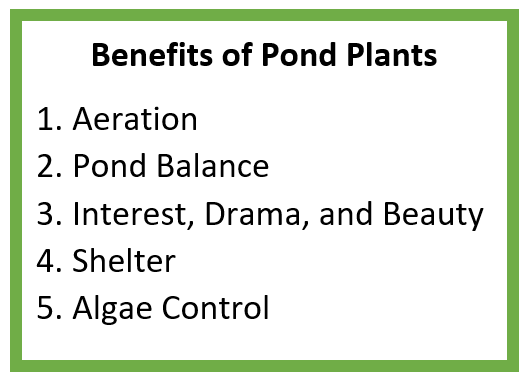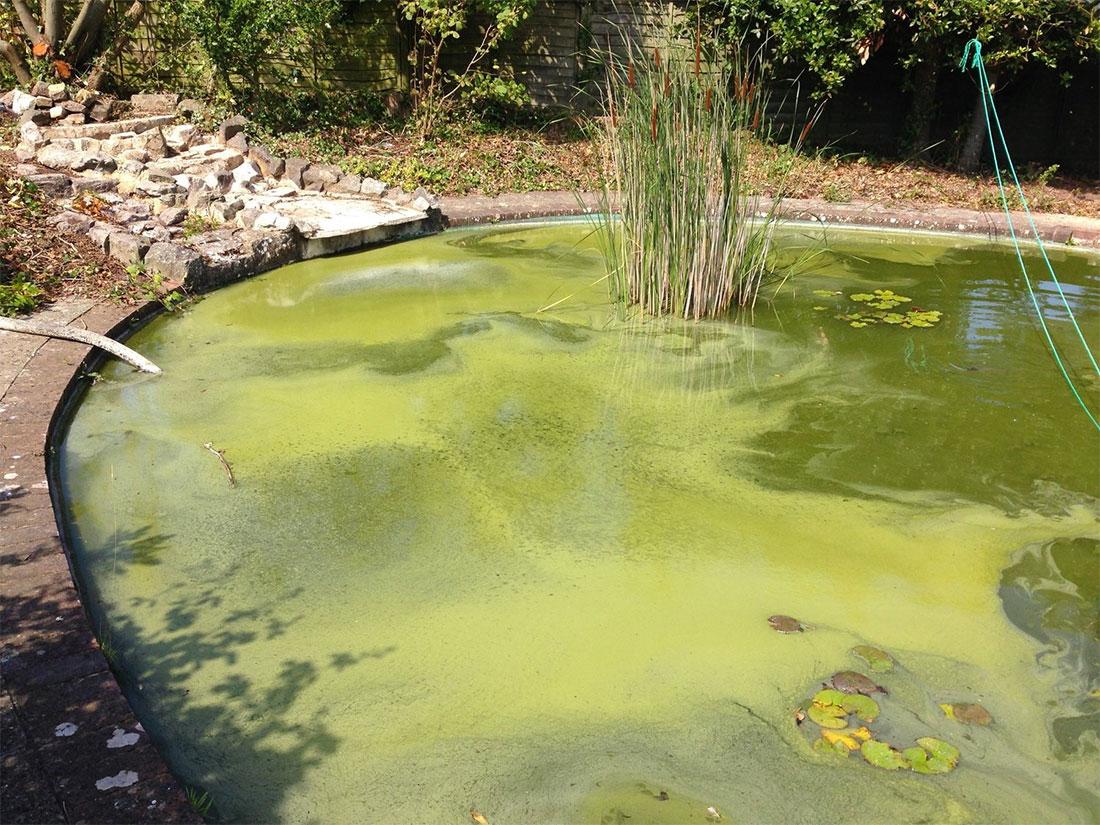5 Benefits of Pond Plants

We have outlined why plants are so crucial to pond health below.
1. Plants add oxygen to the water
If your pond is heavily stocked with fish, you will need plenty of oxygen in your pond. Especially in Summer! While this can be difficult, plants are a fantastic way of adding oxygen naturally without the need to purchase mechanical aerators. The pond plants will release oxygen through photosynthesis, while also removing excess nutrients from the pond.
Further to the above, the extra oxygen will improve the efficiency of your filtration, as healthy bacteria will colonise quicker and break down the harmful waste in your pond.
2. Plants keep your pond health balanced
.jpg)
If you have fish in your pond, they will probably produce more waste in the summer periods due to the increase in metabolism and temperature. The beneficial bacteria created by the extra aeration from plants will help to breakdown the waste, keeping your pond clean and clear.
3. Plants add interest, drama, and beauty
Any plant in your pond can add a sense of colour and nature to your garden. Ornamental marginals and wildlife marginals help to add colour and they also help to soften features that are present (like rocks, statues, fountains, or waterfalls). A great oxygenator that can add real drama is a waterlily. They produce a lot of oxygen, add a lot of colours, and provide shelter. They are great at keeping your pond healthy and looking beautiful!
4. Plants provide shelter
As above, your pond plants will provide shelter from the sun and from predators. This is vital at reducing the temperature of the pond to provide a more habitable environment for your fish, but they also provide a place for your fish to hide if a heron comes to your pond. The plants also provide a safe space for your fish to lay their eggs; thus, being a natural and safe spawning ground.
The plants will also act as a shelter for a variety of wildlife; harbouring frogs, snails, dragonflies, newts, and more! These animals will look for shelter, water and an area suitable for spawning. If your pond has plants and water, this is certain to entice a wide variety of wildlife to your pond.

5. Plants help control algae
Pond plants will compete with algae for nutrients in the pond, thus helping to control algae blooms and prevent them. As plants grow and photosynthesise, they will remove excess nutrients from the water as and provide shade, which slows algae blooms and even prevents them from happening.
Nitrates, which algae uses to grow, can only be removed with plants or water changes. It is best to avoid water changes where possible as this removes healthy bacteria from your pond and it can reset the pond balance, which is never a good thing. This means the only real way to remove nitrates are through plants.
You may also find our other blog posts interesting. Please see below for further guides:
Pond Plants
Air Pumps
Why Temperature plays a big role in Pond Development
Bacteria: The Importance of Healthy Bacteria
If you have any queries, please email us on info@pondkeeper.co.uk.